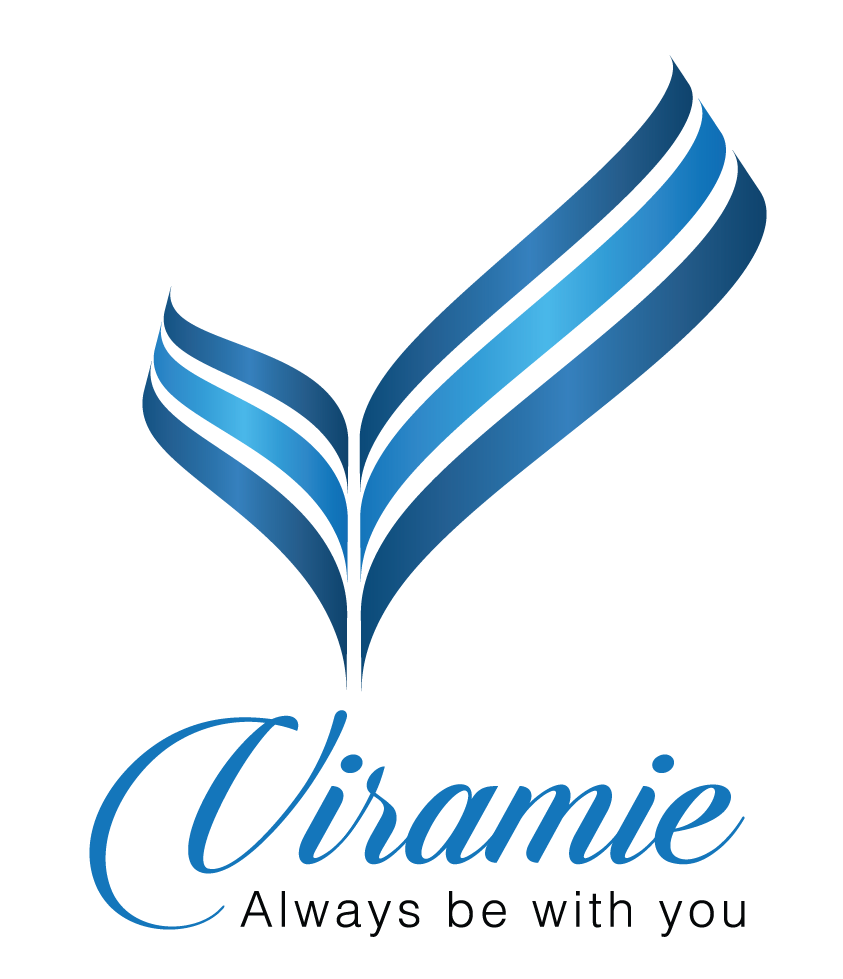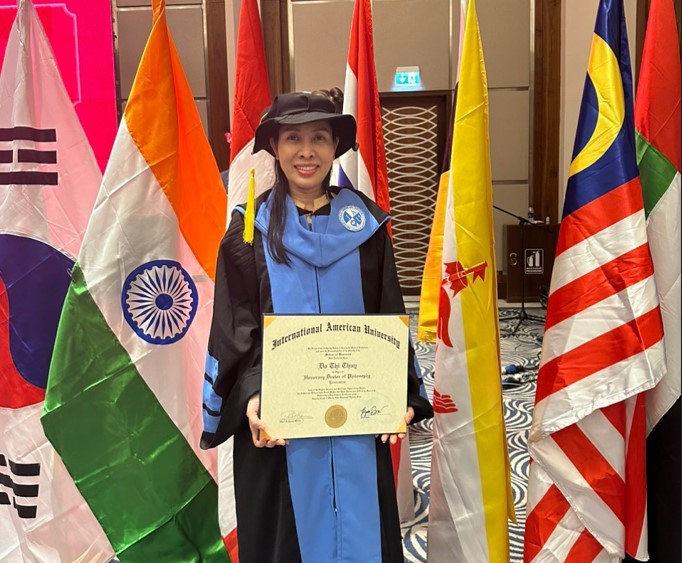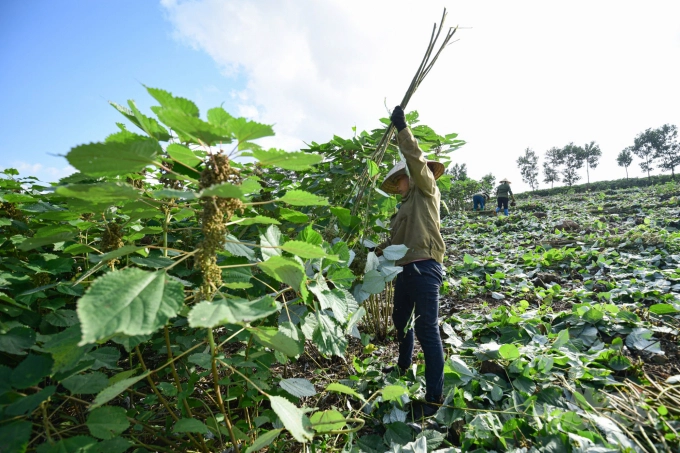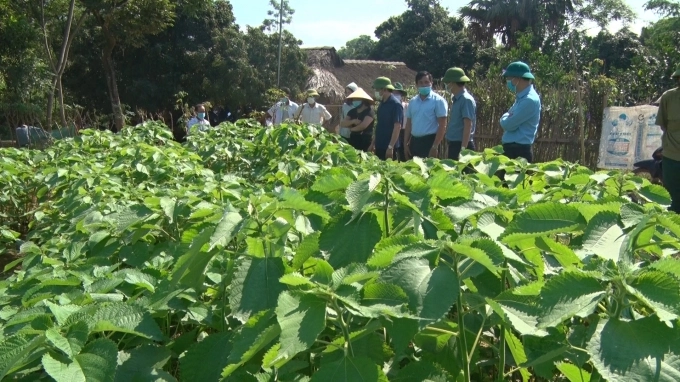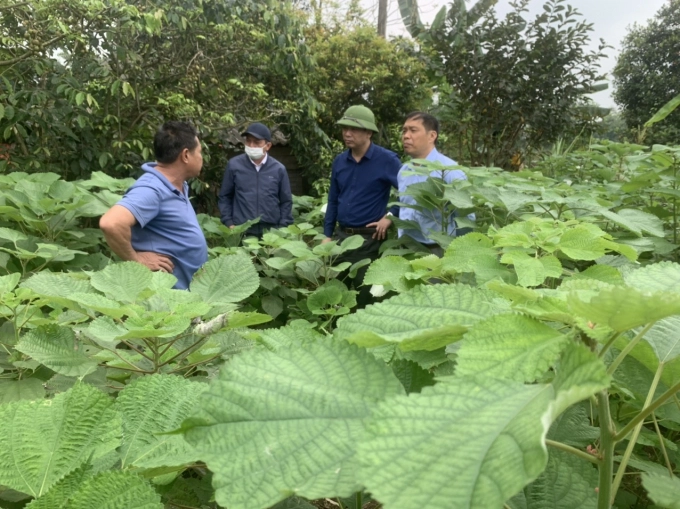(VAN) Deputy Minister Tran Thanh Nam deemed it essential to study and develop ramie into a key crop for mountainous areas in some northern provinces.
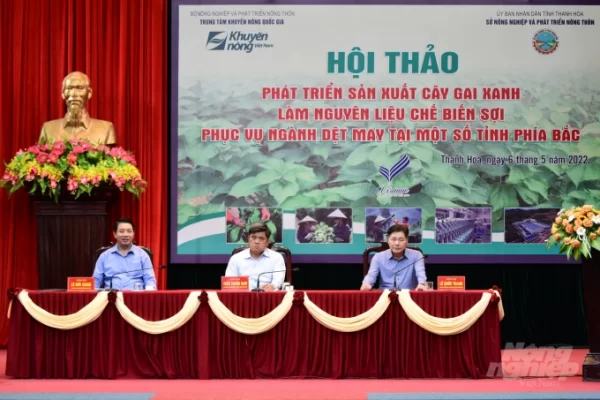
The workshop “Developing ramie production as fiber materials for the textile industry in northern provinces” took place in Cam Thuy, Thanh Hoa last weekend. Photo: Tung Dinh.
The National Agricultural Extension Center (NAEC) in collaboration with Thanh Hoa Department of Agriculture and Rural Development and An Phuoc Viramie Group held the workshop “Developing ramie production as fiber materials for the textile industry in northern provinces” last weekend. The workshop was chaired by Deputy Minister of Agriculture and Rural Development Tran Thanh Nam and Vice Chairman of Thanh Hoa People’s Committee Le Duc Giang.
The textile and garment industry is one of Vietnam’s key industries. And in the face of the industry’s development trend as well as the consumption tendency of high-end markets, the development of raw material areas specifically ramie is a matter that requires further studies and solutions.
Regarding these issues, the Deputy Minister emphasized the need to bring scientific and technical advances into production such as farming procedures, crop varieties, mechanization, processing technology, and options for pest and disease treatment.
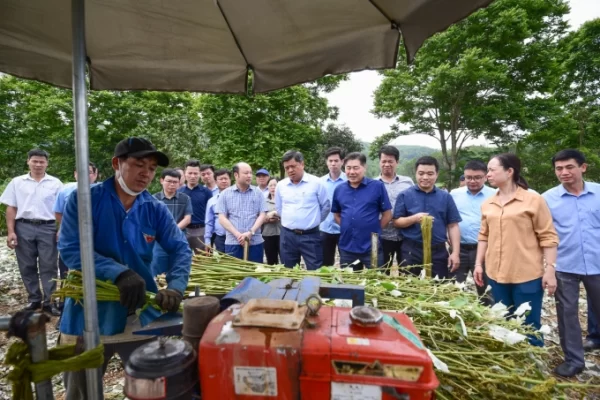
Deputy Minister Tran Thanh Nam, NAEC Director Le Quoc Thanh and An Phuoc Viramie’s representative visited the ramie material area. Photo: Tung Dinh.
As stated by Vice Chairman of Thanh Hoa People’s Committee Le Duc, Thanh Hoa has formed a ramie material area with a total acreage of 703 ha up to the present date. It is expected that from 2023 onwards the annual area increase would be 1,500 ha, and by 2025 the total area would reach 6,500 ha, ensuring raw material supplies for An Phuoc Fiber Textile Factory.
“The workshop is an opportunity for Thanh Hoa to share and gather experiences in production methods as well as scientific and technical knowledge,” said Mr. Le Duc Giang.
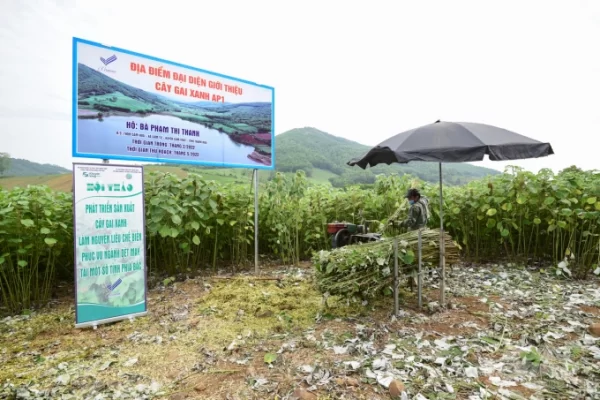
Ramie are becoming a staple crop in many communes of Thanh Hoa. Photo: Tung Dinh.
As stated by Vice Chairman of Thanh Hoa People’s Committee Le Duc, Thanh Hoa has formed a ramie material area with a total acreage of 703 ha up to the present date. It is expected that from 2023 onwards the annual area increase would be 1,500 ha, and by 2025 the total area would reach 6,500 ha, ensuring raw material supplies for An Phuoc Fiber Textile Factory.
“The workshop is an opportunity for Thanh Hoa to share and gather experiences in production methods as well as scientific and technical knowledge,” said Mr. Le Duc Giang.
Deputy Minister Tran Thanh Nam had shared several orientations to develop ramie production in the workshop. The Deputy Minister requested NAEC to collaborate with An Phuoc Fiber Textile Factory to devise a scheme to develop raw ramie production so that provinces can receive more support in the planning of raw material areas.
NAEC needed to join hands with Thanh Hoa to construct a pilot service cooperative model and a production model that applied synchronous mechanization in the service direction as well as develop OCOP products made from ramie.
The Deputy Minister also assigned the Department of Crop Production to coordinate with relevant units and localities to continue organizing in-depth workshops on ramie, focusing on clarifying issues concerning seedlings, cultivation procedures, economic efficiency, multivalue of ramie, and building material areas associated with organizing green thorn production.
The units assigned the task need to affirm the multivalue of ramie to create confidence within people so that they can proactively produce. Photo: Tung Dinh.
Regarding the construction of raw material areas, Mr. Vuong Dac Hung, Deputy Director of Hoa Binh Department of Agriculture and Rural Development suggested that An Phuoc Viramie must specifically select a number of provinces to grow ramie to avoid the situation of oversupply and announce the planning of factories and raw material areas for everyone to know.
Sharing with delegates and farmers, Ms. Pham My Linh, Deputy Director of An Phuoc Agriculture JSC (under An Phuoc Group – Viramie), said that compared to crops ethnic minorities were still planting to sustain livelihoods such as acacia, corn, and cassava, green thorns’ economic efficiency was 2 – 3 times higher.
Another thing was that the harvest time of green thorns was from 2 – 3 months, helping farmers shorten investment time, recover capital quickly and ensure income. Green thorn barks did not require strict standards like vegetables and fruit trees.
“An Phuoc Group – Viramie commits to underwrite green thorns at a stable price for 10 years so that people can rest assured to produce, create stable jobs, increase incomes and improve living conditions”, said Ms. Pham My Linh.
In order to realize these opportunities, Ms. Linh said that competent authorities should continue to develop policies to support businesses and people growing green thorns, especially ethnic minorities in highland and difficult areas that were limited in financial capacity and investment capital despite having a fairly large land area.
Authors: Tung Dinh – Van Viet
Translated by Samuel Pham
